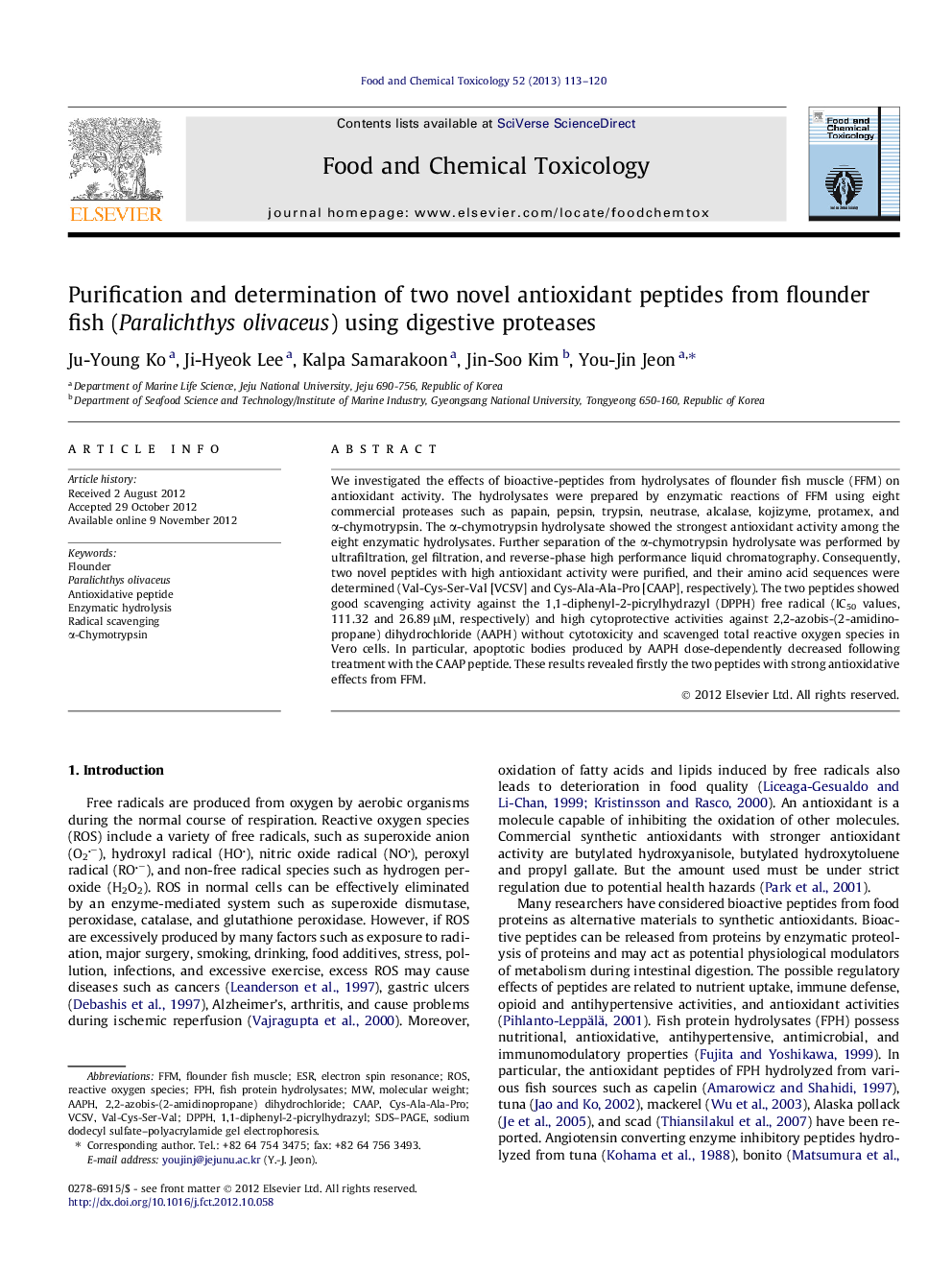| Article ID | Journal | Published Year | Pages | File Type |
|---|---|---|---|---|
| 2585254 | Food and Chemical Toxicology | 2013 | 8 Pages |
We investigated the effects of bioactive-peptides from hydrolysates of flounder fish muscle (FFM) on antioxidant activity. The hydrolysates were prepared by enzymatic reactions of FFM using eight commercial proteases such as papain, pepsin, trypsin, neutrase, alcalase, kojizyme, protamex, and α-chymotrypsin. The α-chymotrypsin hydrolysate showed the strongest antioxidant activity among the eight enzymatic hydrolysates. Further separation of the α-chymotrypsin hydrolysate was performed by ultrafiltration, gel filtration, and reverse-phase high performance liquid chromatography. Consequently, two novel peptides with high antioxidant activity were purified, and their amino acid sequences were determined (Val-Cys-Ser-Val [VCSV] and Cys-Ala-Ala-Pro [CAAP], respectively). The two peptides showed good scavenging activity against the 1,1-diphenyl-2-picrylhydrazyl (DPPH) free radical (IC50 values, 111.32 and 26.89 μM, respectively) and high cytoprotective activities against 2,2-azobis-(2-amidino-propane) dihydrochloride (AAPH) without cytotoxicity and scavenged total reactive oxygen species in Vero cells. In particular, apoptotic bodies produced by AAPH dose-dependently decreased following treatment with the CAAP peptide. These results revealed firstly the two peptides with strong antioxidative effects from FFM.
► Two novel antioxidant peptides Val-Cys-Ser-Val and Cys-Ala-Ala-Pro were isolated from flounder fish. ► The two peptides of below 1 kDa showed high antioxidant activity. ► The two peptides showed high cytoprotective activities against AAPH with non-cytotoxicity and scavenged total ROS in Vero cells.
